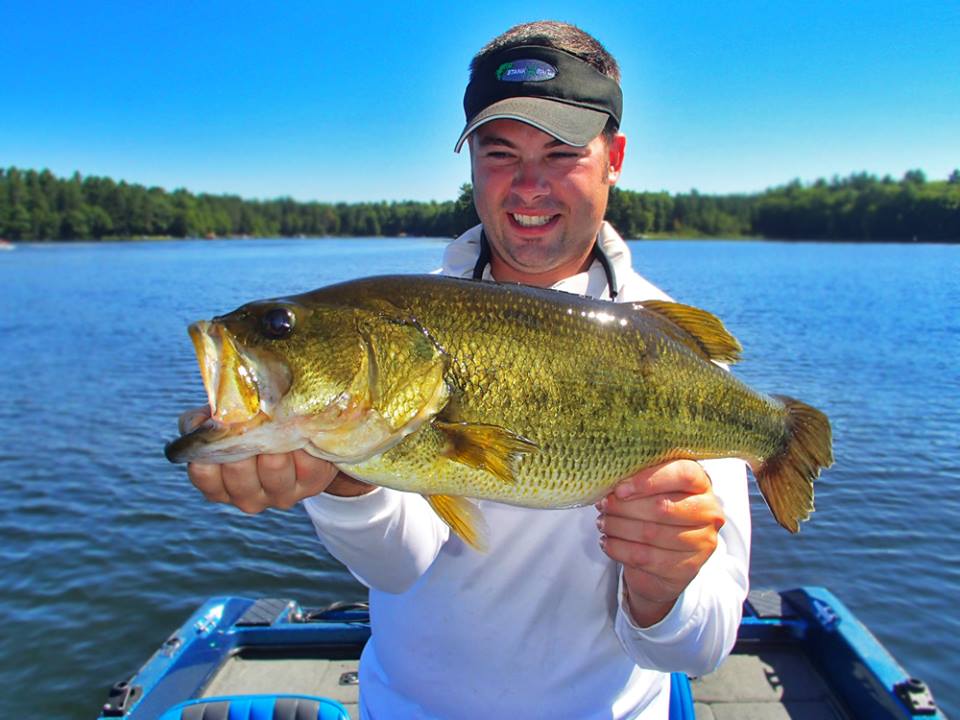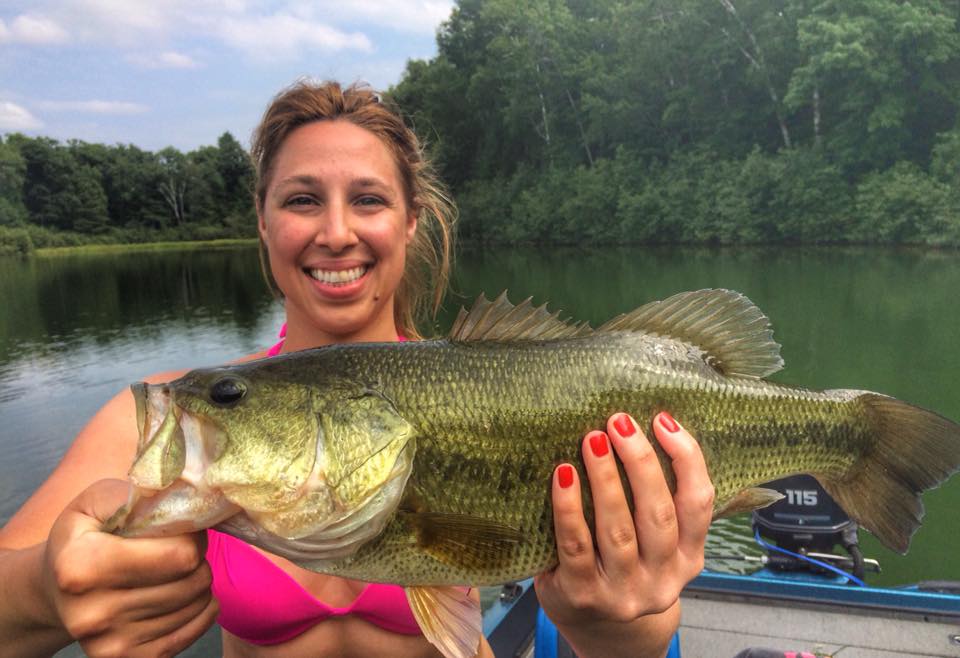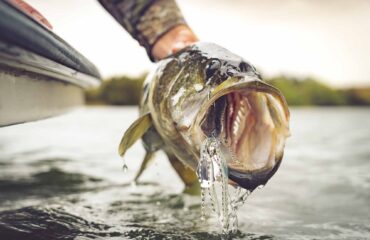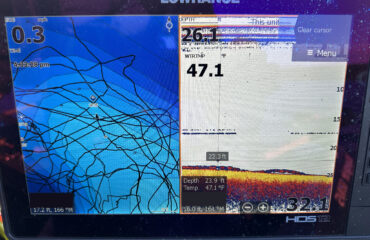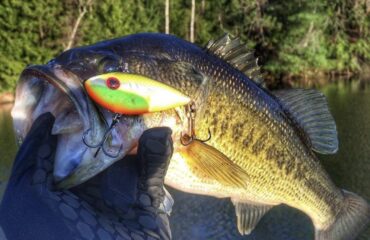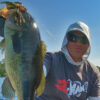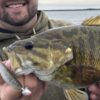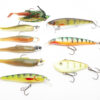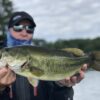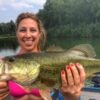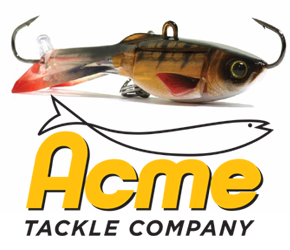Hunting Early Morning Giants
It’s mid-July. The daytime surface temperatures typically reach 75 to 80 degrees, often exceeding that. Summer peak is on. Consequently, the daytime fishing efforts aren’t paying off, as the biggest largemouths congregate along the deepest edges, lay low, and are lounging around comfortably in the better oxygenated deeper waters.
Struggle can be the norm for midday fishing. Time is best spent elsewhere, as oppressive heat and sun exposure delivers some of the most challenging fishing conditions of the year. However, these conditions will help deliver the best trophy largemouth fishing of summer if you’re willing to get out of bed very early.
Warm overnight lows, high dew points and humid nights aid in stimulating largemouth bass appetites the following morning. For this window of opportunity, you need heat. The hotter and humid, and more repetitive each day becomes, the better and more predictable the morning bite gets.
More than just heat is needed, however. You have to be on the right, fertile waters loaded with food and hosting hungry largemouths. For this seasonal pattern, I favor heavily vegetated mesotrophic and eutrophic lake types.
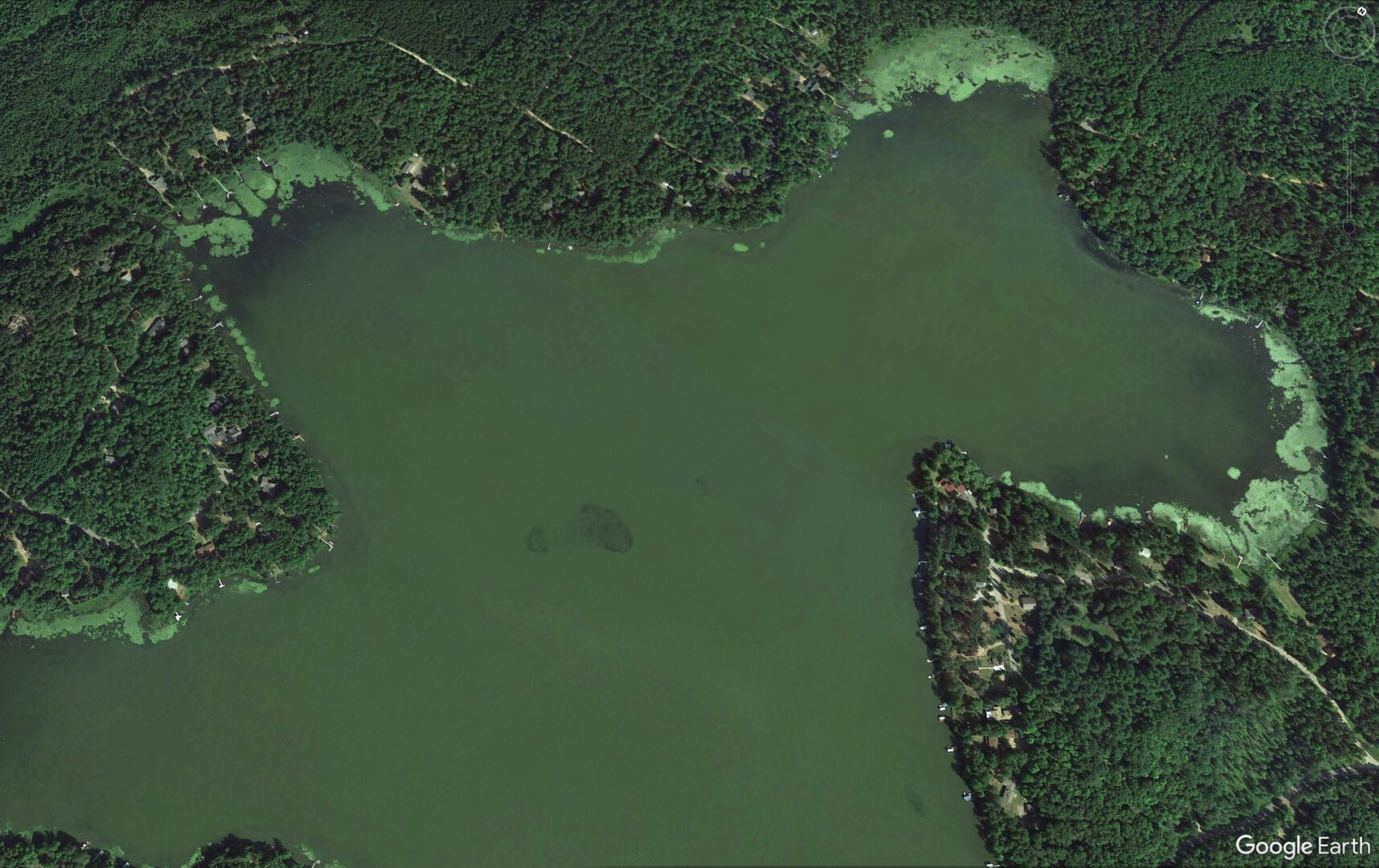
This is Not a Bite That Happens Everywhere
Largemouths are comfortable in warmer, shallower waters. They are also efficient predators in algal bloom conditions. Come mid-summer under 78-to-82-degree water temps., largemouths from these waters feed heavily all season long to maintain their robust weights.
Wherever I find heavily vegetated or algae-blooming, waters, I want to go fish them exclusively in summer. My region of Wisconsin is very fortunate to have these fertile systems in place. These lakes can exist throughout agricultural regions, in glacial lake regions, and in drainage systems. A lot of them support great largemouth bass fisheries. Eutrophic waters that can survive up to a decade without any kills will produce the biggest bass anywhere in the north. These waters could contain several year-classes of bass, and be home to giants that feed non-stop.
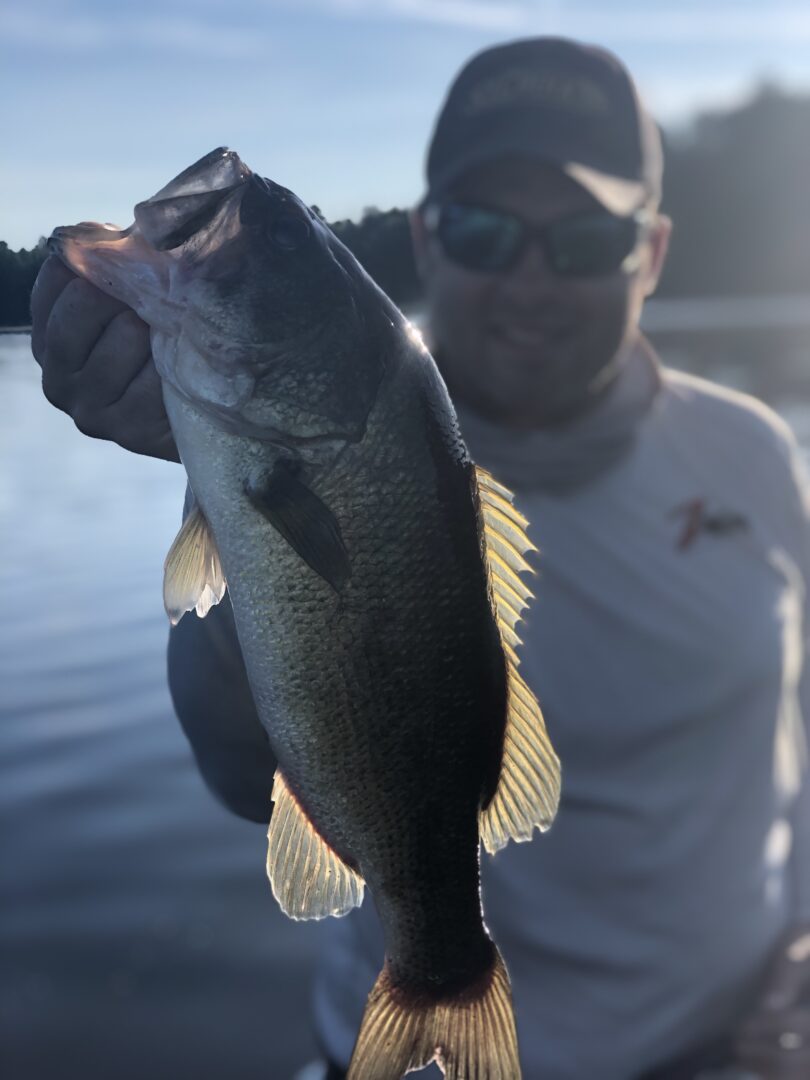 Eutrophic lakes are exceptionally fertile, shallow, and heavily vegetated. These waters are personified by all of the nutrients and run-off that feeds into them, triggering summertime algae blooms and potential summer kills. Rarely deeper than 10 to 15 feet, they are bowl shaped, often lacking well defined structure other than islands (if present) or weed humps. They tend to have silted muddy bottoms, and may feature boggy and heavily submerged wooded shorelines and tannic stained water. Some, that are borderline Mesotrophic waters, can be 20 feet or more. In summertime, these lakes can take on the appearance of pea-green soup.
Eutrophic lakes are exceptionally fertile, shallow, and heavily vegetated. These waters are personified by all of the nutrients and run-off that feeds into them, triggering summertime algae blooms and potential summer kills. Rarely deeper than 10 to 15 feet, they are bowl shaped, often lacking well defined structure other than islands (if present) or weed humps. They tend to have silted muddy bottoms, and may feature boggy and heavily submerged wooded shorelines and tannic stained water. Some, that are borderline Mesotrophic waters, can be 20 feet or more. In summertime, these lakes can take on the appearance of pea-green soup.
Most largemouth habitat is vegetation. Native plant species like bulrushes, lily pads, coontail, northern milfoil, and pondweed varietals are most common. Meanwhile non-native invasives and introduced species like Eurasian milfoil, hydrilla, bladderwort, and curly-leaf pondweed may also be featured and in some cases take over the entire lake.
Big largemouths require an abundance of food, and their locations and feeding habits will revolve around those locations.
Go Where the Food Is
After launching the boat, we are observant of surface activity. Most of the time schools exploding the lake’s surface are visible. If you see any commotion, you’ll know in which direction to go.
On any new or familiar body of water, the areas I check first, if the lake contains them, are isolated weed humps & bars, offshore points and extensions leading into deep water, the deepest edges of weed bars, and deep weedlines that drop down and extend into the lake’s basin. If the lake has minimal weed structure, you’ll want to idle and run through its basins, especially if it fits the profile of my ideal eutrophic lake choice.
The most shallow and weedy largemouth lakes are poorly mapped, or not at all. Thankfully on these lakes, water color and wave action can reveal the presence of submerged weed bars easily. If the lake is in summer bloom, weed bars that are sprouting above and sub-surface will be visibly dark green. Many times, I’ve discovered previously unknown humps by observing weed clumps protruding like this through the surface. Additionally, if there’s a wind, those same weed clumps will disrupt the ripple pattern across the lake’s surface. These two indicators are by far the best.
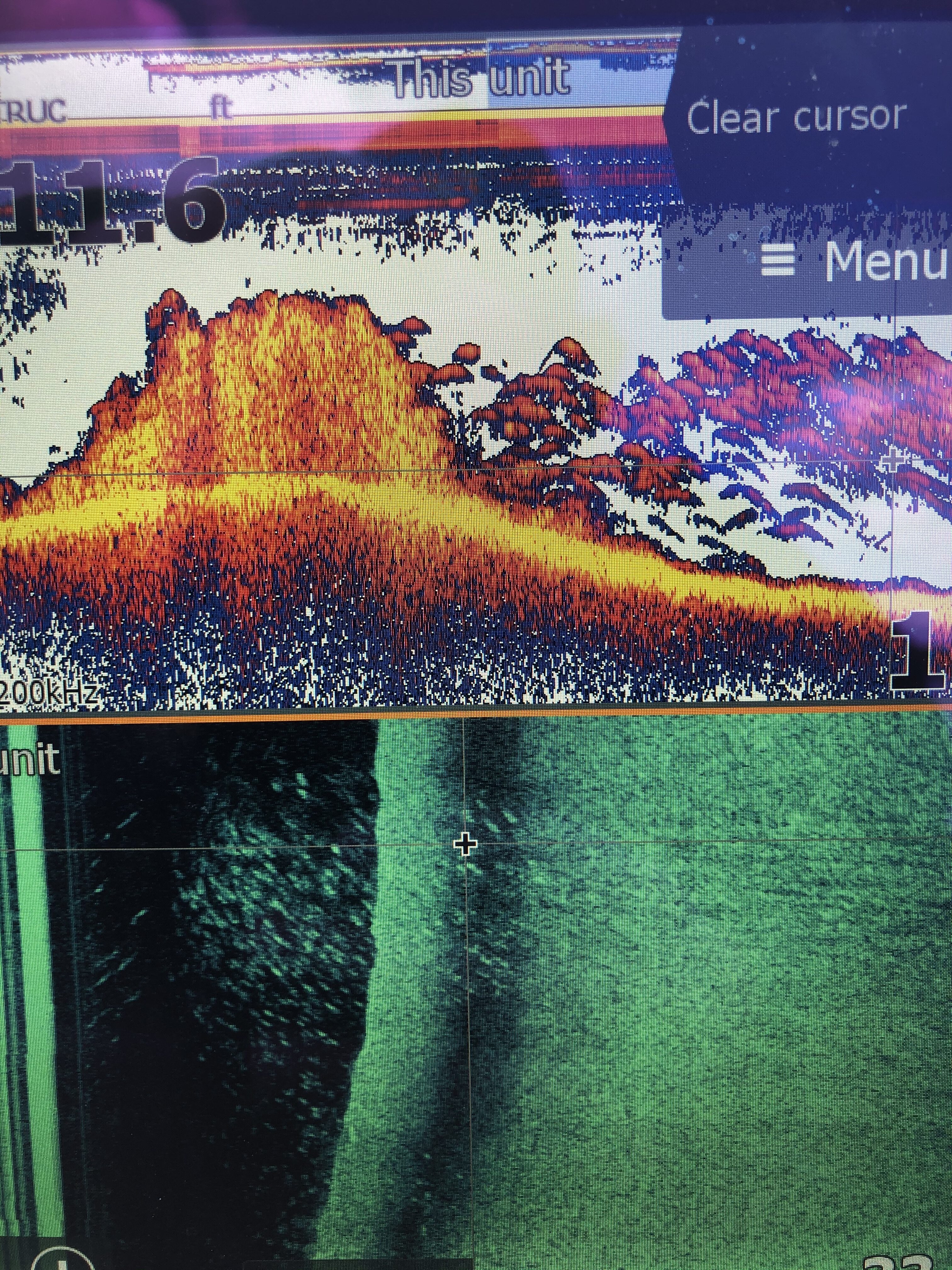 The best weed humps I know of are often associated with weed bars and some forms of weed growth. Weed beds located in open water are good indicators. Aquatic vegetation can only grow to an extent, and most of the humps that are largemouth holders are typically in depths of 15 ft. or less. Cabbage weed species and coontail are bluegill and largemouth magnets on these structures.
The best weed humps I know of are often associated with weed bars and some forms of weed growth. Weed beds located in open water are good indicators. Aquatic vegetation can only grow to an extent, and most of the humps that are largemouth holders are typically in depths of 15 ft. or less. Cabbage weed species and coontail are bluegill and largemouth magnets on these structures.
Having a good knowledge of the lake’s deepest weeds and offshore bars is critical for identifying likely locations. Side imaging is integral, and will confirm the presence of bluegill schools if they aren’t visible otherwise.
Largemouths will go where their food is. Whether they’re using the basins or deepest edges, idle around, but keep a distance away from them. Good side imaging such as Lowrance’s 3-in-1 Active-Target transducer can often separate the fish apart from habitat. Additionally, with bluegill schools and bass both roaming and constantly on the move throughout the open water basin, Forward-Facing sonars can be an integral too for this, but I refuse to equip myself with these technologies. Whatever your technology methods are, enter waypoints to where fish are holding, then go back to fish those areas slowly and methodically. Casting and jigging strategies will work. Use spot-lock frequently to precisely hold boat position and where pods of largemouths are located.
On the hot weather days of July and August, I can anticipate a good early morning window and trophy bass opportunity if fisheries are identified and the conditions enable.
Bluegills are the driving forces behind many largemouth bass fisheries. More anglers are learning that locating juvenile bluegill schools is necessary for mid-summer success. On these fertile and weedy waters, the locations and feeding habits of largemouth are determined by this food source.
